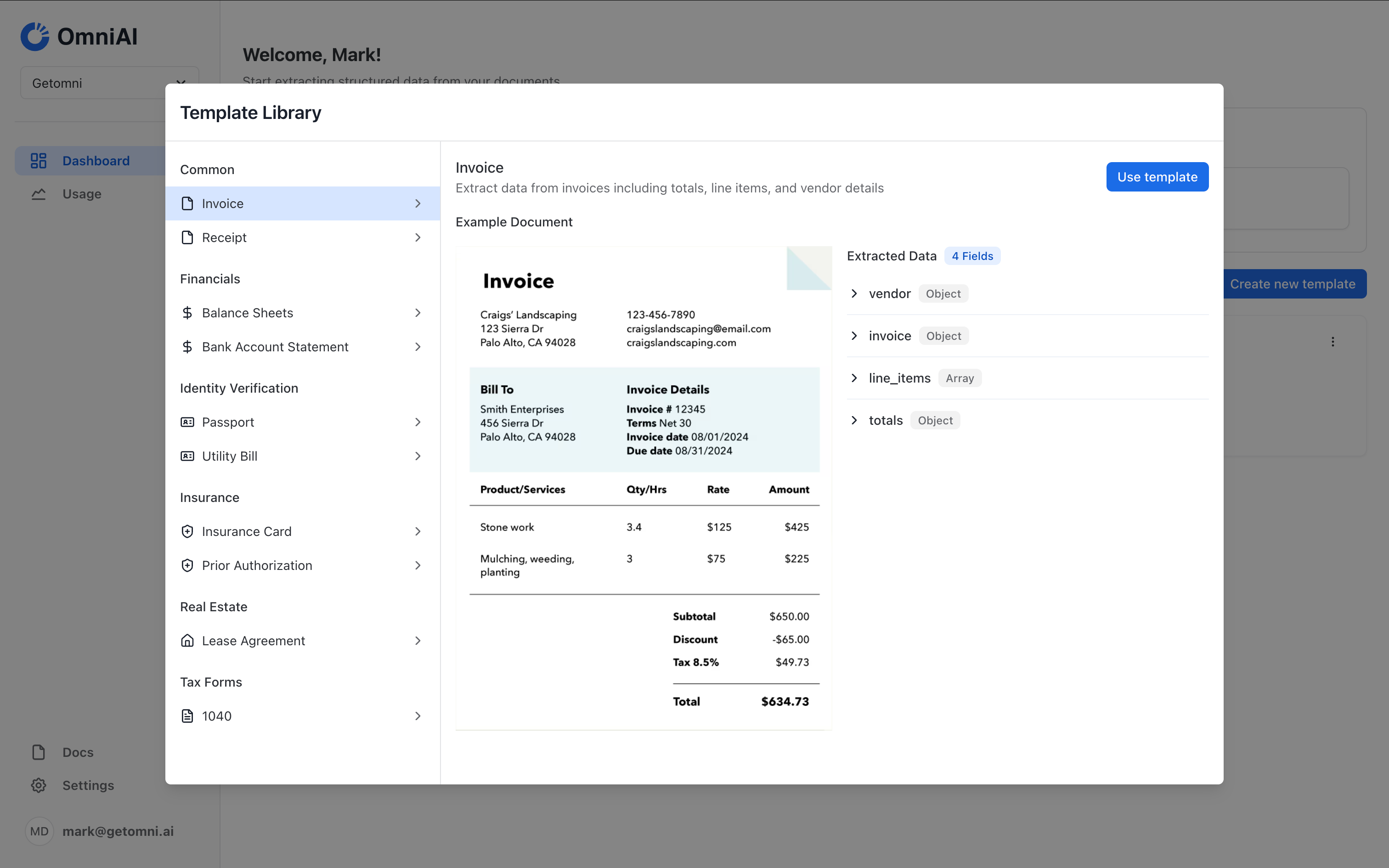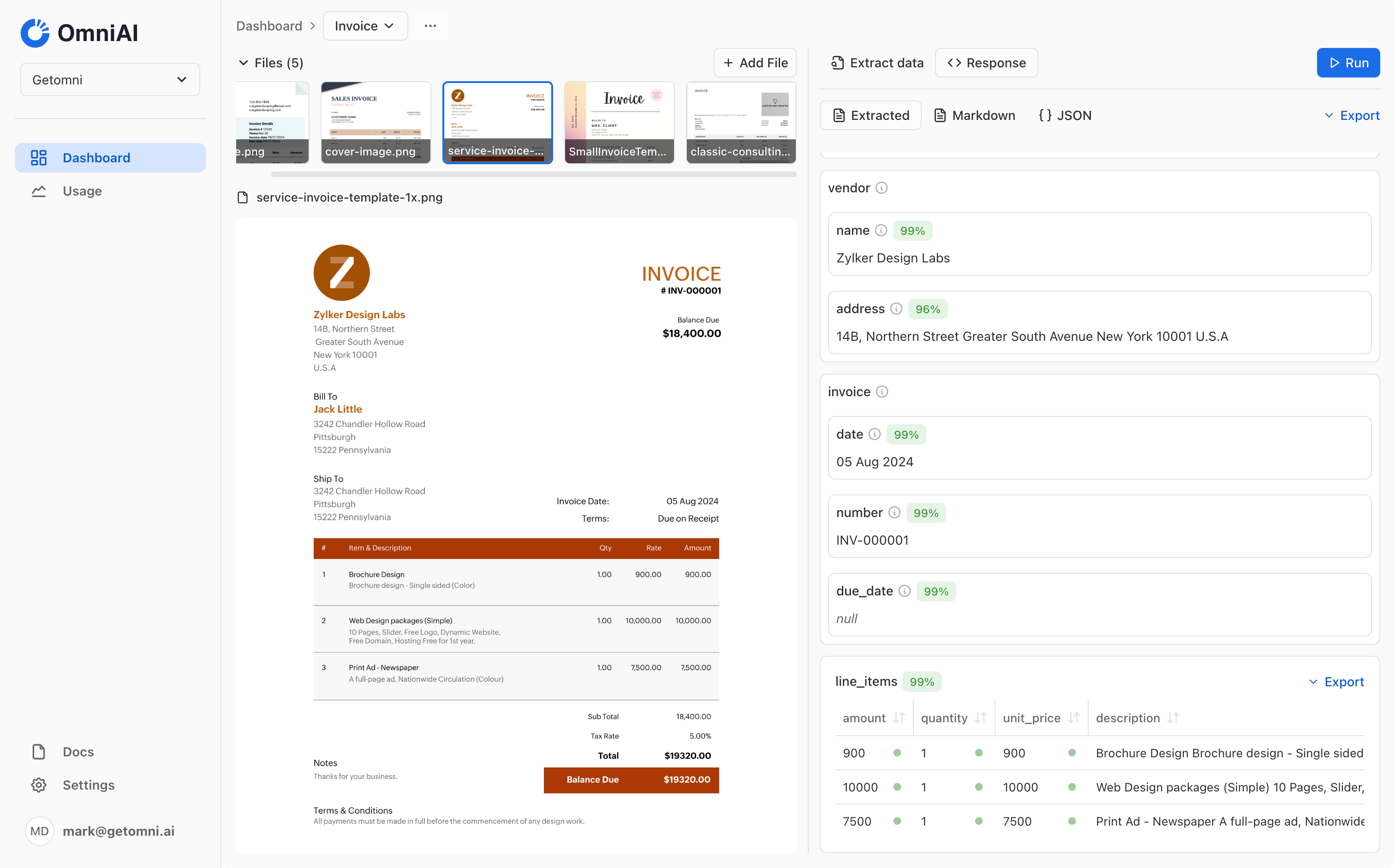1
Create a document template
Create a document template by either using our pre-defined invoice
templates or by uploading an example of your invoice.

2
Build an extraction schema
Build a extraction schema to parse the invoice. Let’s extract the following fields:
- totals
object- invoice totals, including tax, subtotal, and total - vendor
object- vendor details, including name and address - invoice
object- invoice details, including date and number - line_items
array- line items, including amount, quantity, unit price, and description
Example invoice JSON schema
Example invoice JSON schema
3
Test the template
Run the template on an example invoice to ensure it’s working as expected. You can also upload multiple invoices to test the template on different invoices.

4
Using the API
Once you’ve tested the template and confirmed it’s working as expected, you
can use the API to parse invoices.You can retrieve your API keys from the settings page.Basic usage of the API:
- Create an extraction using POST /extract
- Get the extraction jobId from the response
- Poll for results with a maximum duration using GET /extract?jobId